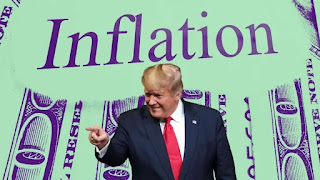2025 U.S. Economic Outlook: Is Stagflation Taking Hold?
⚠️ Inflation, Slow Growth, Global Trade Friction – A Perfect Storm?
With broad tariffs, rising retaliation, and key supply chains under threat, the U.S. economy is flashing multiple stagflation warning signs.
The latest shock: a 25% tariff on autos and auto parts from Canada, Mexico, and the EU—a move that undermines decades of trade integration, especially the U.S.–Canada Auto Pact and USMCA (NAFTA 2.0).
🔥 TRADE POLICY EXPLOSION – WHO’S BEING HIT?
🌎 Major Tariff Moves (2025)
| Target | Key Products Tariffed | Retaliation or Response |
|---|---|---|
| 🇨🇳 China | EVs, batteries, solar panels, chips, steel | Tech import restrictions, rare earth quotas |
| 🇪🇺 EU | EVs, steel, aircraft parts, wine/luxury goods | Counter-tariffs on U.S. planes, chips, and services |
| 🇲🇽 Mexico | Electronics, car parts, agri-products | Formal WTO complaint + tariffs on grains and beef |
| 🇨🇦 Canada | Autos, auto parts (25%), aluminum, lumber, dairy | Full retaliation: U.S. food, machinery, and metals hit |
🚗 Auto Pact in Crisis
-
The 1965 Auto Pact allowed free movement of vehicles and parts between the U.S. and Canada, underpinning a highly integrated North American supply chain.
-
The new 25% tariff cripples this agreement, and likely violates USMCA terms.
-
U.S. automakers face rising costs, supply shortages, and production delays.
-
Canadian and Mexican retaliation is targeting U.S. agricultural exports, manufacturing equipment, and consumer goods.
📉 MACRO SNAPSHOT – U.S. MARCH 2025
| Indicator | Current Signal | Stagflation Risk? |
|---|---|---|
| Inflation | Reaccelerating due to tariffs, oil | ✅ |
| Employment | Cooling labor market | ⚠️ |
| GDP Growth | Slowing (consumer + industrial) | ✅ |
| Fed Policy | Hawkish hold | ⚠️ |
| Trade Disruption | Historic—pacts and alliances shaken | ✅✅✅ |
🔍 DEEPER MACRO TRENDS
📈 Inflation Pressures
-
CPI rising toward 3.6% YoY due to:
-
Tariffs across multiple sectors
-
Supply chain congestion from EU and North America
-
Higher energy and transport costs
-
📉 Growth Faltering
-
Q1 GDP revised to ~0.9% annualized
-
Industrial production down
-
Auto sector especially hard-hit
-
Consumer spending under pressure from rising prices
💼 Labor Market Weakening
-
Layoffs in auto manufacturing, retail, and transport
-
Job openings declining
-
Wage growth slowing down in real terms
⚖️ THE FED’S STAGFLATION TRAP
The Fed faces a brutal dilemma:
-
Cut rates: risks fueling inflation further, especially tariff-driven.
-
Hold or hike: may choke fragile growth and deepen layoffs.
Right now, the Fed is choosing a hawkish pause, hoping inflation will ease without tipping the economy into a harder downturn.
🌐 GEOPOLITICAL AND TRADE FALLOUT
🔁 Retaliation by Allies:
-
Canada, EU, and Mexico are coordinating countermeasures.
-
Global trade dynamics reverting to fragmentation.
-
Supply chains are being reshuffled, creating inefficiencies and pricing pressure.
🚧 Risks to U.S. Exports:
-
Key U.S. sectors now under retaliatory pressure:
-
Aerospace
-
Agriculture
-
Machinery & equipment
-
Consumer packaged goods
-
🧭 Final Call: A Stagflationary Setup Is Forming
While not in full stagflation yet, the U.S. now faces:
-
Supply-side inflation driven by trade wars
-
Slower demand and production growth
-
Labor market stress in core sectors
⚠️ Mild stagflation or stagflation-lite is not just a possibility—it’s becoming the base case if trade tensions aren’t dialed back.



















